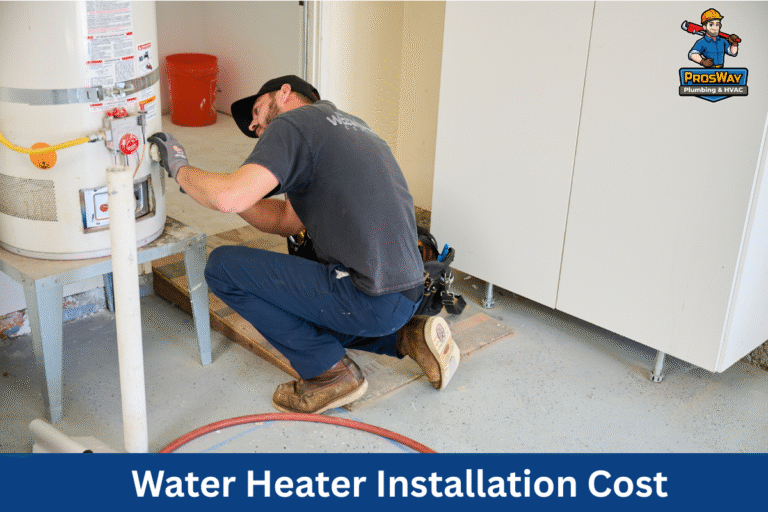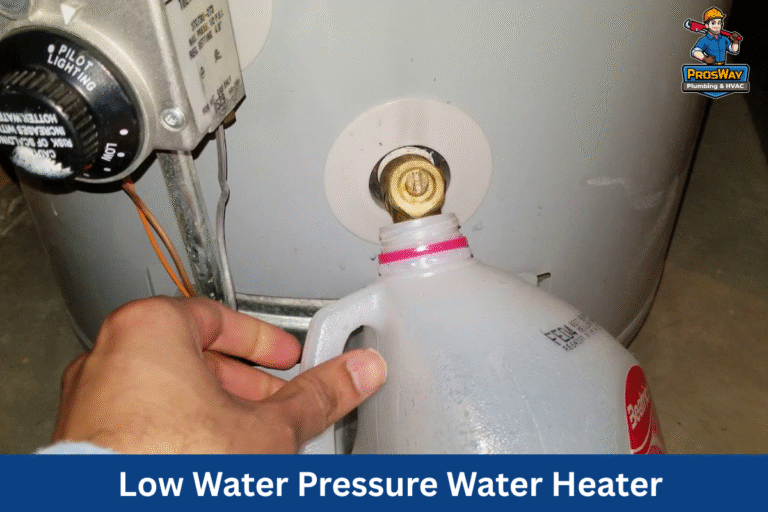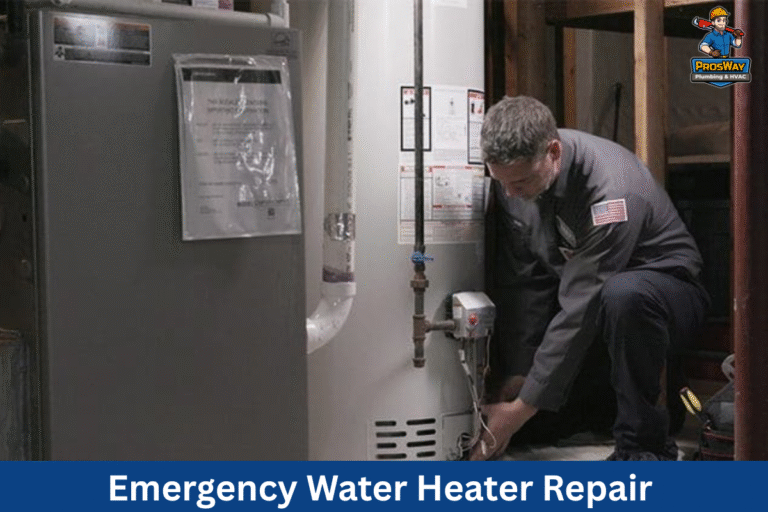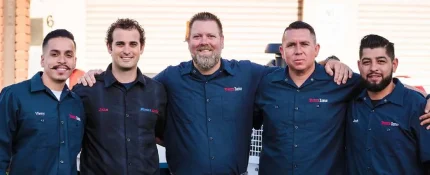Sewer line repairs can be a headache for homeowners. Many face the challenge of choosing a method that offers long-lasting performance and reliability.
This blog post will compare traditional dig-and-replace methods with trenchless pipe lining and pipe bursting.
You will gain insights into which sewer line repair method offers long-lasting reliability, helping them make informed decisions.
The right sewer line repair method is crucial to avoid repeated issues and costly repairs. This guide aims to provide clear solutions for ensuring a reliable sewer system.
What Are the Common Causes of Sewer Line Damage?

Common sewer line problems can significantly impact the longevity of systems. Factors such as ground shifting and material breakdown in older pipes contribute to degradation.
This section will cover these issues along with their effects on sewer line replacements and drain repair strategies.
Causes of Sewer Pipe Degradation Over Time
Sewer pipes can degrade over time due to various factors. One major cause is ground shifting, which can create pressure and lead to cracks.
Tree root intrusion is another common issue, as roots search for moisture and can invade pipes, causing blockages and damage.
Both of these issues highlight the importance of regular drainage inspections by an expert to catch problems early, potentially saving costly repairs.
Additionally, the materials used in older sewer systems contribute to their wear. Cast iron and clay pipes are more prone to deterioration compared to modern materials.
Homeowners experiencing repeated drainage problems may benefit from trenchless sewer repair methods, which provide a less invasive solution for restoring the pipe.
Signs Your Sewer Line Needs Attention
Frequent backups or slow drains may indicate underlying issues with the sewer line, especially in older systems using cast-iron pipes.
If unusual smells or gurgling noises arise from drains, these can be early warning signs that emergency action is necessary to prevent further damage.
Another critical sign to observe is visible damage around the property, such as pooling water in the yard, which could suggest leaks in the plumbing system.
Homeowners with sewer lines made of polyvinyl chloride (PVC) may experience fewer problems; however, age and environmental factors still play a role in their integrity.
Recognizing these signs early can lead to timely repairs, ultimately ensuring long-lasting performance and reliability of the sewer line.
Why Is Tree Root Intrusion a Concern for Sewer Lines?
Tree root intrusion poses a significant threat to sewer line structures. Roots naturally seek nutrients, often invading pipes that may already be weakened by age or environmental factors.
Once inside, they can create substantial clogs that increase the risk of leaks, which can compromise indoor air quality and damage the surrounding landscape.
Addressing tree root intrusion early is essential for maintaining a functional sewer system. Homeowners facing this issue may consider trenchless sewer line repair methods.
This approach allows for efficient leak detection and repairs, minimizing disruption to the property and protecting the integrity of the surrounding landscape.
What Should You Know About Traditional Dig-and-Replace Sewer Repair Longevity?

When it comes to replacing old or damaged sewer lines, the traditional dig-and-replace method is a well-known solution.
It involves excavating trenches to access the damaged line, removing it, and installing new piping.
While effective, homeowners often wonder which sewer line repair method offers long-lasting reliability, especially when comparing this approach to modern alternatives.
The Process of Conventional Sewer Line Excavation
The process of conventional sewer line excavation begins with a full assessment of the existing pipe damage. Contractors will identify sewer line problems and determine the specific sections.
This often involves digging a trench in the soil to access the old pipes, which can lead to disruptions in landscaping and surrounding areas.
Given the nature of this method, homeowners should inquire about warranty options on new pipes, as they can provide peace of mind regarding long-term durability.
Once the excavation is complete, the damaged piping is removed, and new materials are installed in its place.
This method, while effective, can create significant challenges, especially if the old lines are close to other utilities. Homeowners may want to compare this approach with alternatives like pipe bursting.
Materials Used in Traditional Pipe Replacement
In traditional dig-and-replace sewer repair, the materials used for pipe replacement significantly affect the longevity and reliability of the main sewer line.
Commonly utilized materials include PVC and high-density polyethylene (HDPE), known for their resistance to corrosion and ability to withstand shifting soil conditions.
A thorough sewer line inspection is essential before replacement to assess the specific needs of the plumbing system.
The choice of materials can directly influence overall performance, including potential interactions with other plumbing components like the sump pump.
By selecting the right materials, homeowners can minimize future repair costs and extend the lifespan of their sewer lines.
Consulting with qualified professionals about the best options available ensures informed decisions, benefiting the plumbing system for years to come.
What Is the Expected Lifespan of Replaced Pipes?
The expected lifespan of sewer lines replaced through traditional dig-and-replace methods generally ranges from 30 to 50 years.
This longevity largely depends on the materials used, with PVC and high-density polyethylene (HDPE) offering the best resistance to corrosion and environmental stressors.
Homeowners should consider examining their water supply systems to ensure compatibility with these materials, as this can further enhance efficiency.
While traditional methods provide a solid solution for sewer line repair, they can significantly disrupt landscaping and daily activities during installation.
Utilizing advancements in trenchless technology may address some of these concerns by reducing site disturbance while still achieving reliable results.
Ultimately, homeowners should weigh the benefits of traditional repairs against these modern methods when considering the long-lasting performance.
How Trenchless Pipe Lining Works for Sustained Performance?

Trenchless pipe lining, particularly Cured-in-Place Pipe (CIPP) lining, offers an innovative solution for sewer line repair. This method utilizes epoxy liners that enhance durability and resist corrosion and tree root intrusions.
It minimizes ground disturbance, preserving property stability. Understanding these advantages helps homeowners make informed decisions.
Cured-in-Place Pipe (CIPP) Lining
Cured-in-Place Pipe (CIPP) lining is a trenchless sewer repair method that involves inserting a flexible liner impregnated with epoxy resin into the damaged sewer line.
Once in place, the liner is inflated and cured using hot water or steam, forming a tight, watertight seal within the existing pipe.
This process minimizes the risk of future leaks, making it an effective alternative to traditional dig-and-replace methods.
This technique allows for comprehensive sewer line inspections before installation, ensuring that the extent of any damage is thoroughly assessed.
By leveraging knowledge of current sewer conditions, CIPP lining addresses existing issues while enhancing longevity and reliability.
Homeowners benefit from reduced disruption to their landscaping and minimal downtime, making this method an appealing choice for those seeking durable sewer solutions.
Material Properties of Epoxy Liners and Their Lifespan
Epoxy liners have superior material properties that significantly enhance the durability of sewer lines. These liners are designed to resist corrosion and tree root intrusion.
As a long-lasting solution, epoxy liners help prevent costly repairs often associated with traditional methods that involve extensive digging.
The lifespan of epoxy liners typically ranges from 50 to 100 years, making them an attractive option for homeowners looking to ensure the reliability of their sewer systems.
Proper diagnosis of existing pipe conditions is essential before installation, as this enables qualified professionals to determine the best approach for restoration.
By utilizing epoxy liners, homeowners can protect their plumbing fixtures and minimize the potential for future disruptions, ensuring their sewer lines remain functional for decades.
Why Are Epoxy Liners Resistant to Roots and Corrosion?
Pipe liners used in trenchless pipe repair are specifically designed to resist both roots and corrosion. The epoxy materials in these liners create a smooth surface.
By effectively sealing existing cracks and flaws, these liners help maintain the integrity of the plumbing system, reducing the likelihood of future repairs and interruptions.
Moreover, the resistance to corrosion is a significant advantage of epoxy liners. Unlike traditional materials, these liners do not deteriorate over time.
This durability means that homeowners can trust their sewer lines to perform reliably, and costly damages associated with material breakdown are avoided, allowing for fewer maintenance concerns.
How Does Pipe Bursting Work?
The pipe bursting method involves replacing damaged sewer lines by breaking them apart while inserting new High-Density Polyethylene (HDPE) pipes.
This subsection will explore the characteristics of HDPE, including its durability and resistance to corrosion.
It will also discuss how pipe bursting allows for increased pipe diameter and flow capacity, comparing its reliability with alternative repair methods.
The Mechanics of the Pipe Bursting Method
The pipe bursting method involves breaking apart damaged sewer lines while simultaneously inserting new pipes, specifically made of High-Density Polyethylene (HDPE).
This technique increases the diameter of the new pipe, optimizing flow capacity. By utilizing this method, homeowners benefit from an efficient solution.
It minimizes disruptions caused by traditional excavation, ensuring their property remains intact during repairs.
You can watch this useful video, How pipe bursting works.
What Are the Characteristics of HDPE Pipes?
High-Density Polyethylene (HDPE) pipes are renowned for their exceptional durability and flexibility, making them an ideal choice for sewer line installations.
This material exhibits strong resistance to corrosion and abrasion, which ensures a long lifespan even in challenging environments.
Homeowners opting for HDPE can expect a reliable solution that minimizes the risk of leaks and breaks, ultimately reducing costly repairs.
Another valuable characteristic of HDPE pipes is their lightweight nature, which simplifies installation processes, including the pipe bursting method.
For homeowners concerned about the long-term performance of their sewer systems, choosing HDPE provides peace of mind, knowing that they are investing in a robust solution.
Comparing Pipe Bursting Reliability to Other Methods
When comparing pipe bursting to other sewer repair methods, such as traditional dig-and-replace techniques, it becomes clear that pipe bursting offers superior reliability.
This method minimizes disruption while effectively replacing damaged pipes with High-Density Polyethylene (HDPE), which is known for its resistance to corrosion.
Homeowners can expect this solution to last significantly longer, as it caters to modern plumbing demands without the extensive excavation.
Another advantage of pipe bursting lies in its ability to increase the diameter of existing sewer lines, providing better flow capacity and reducing the risk of clogs.
In contrast, methods like trenching may not address underlying layout issues effectively. By opting for pipe bursting, homeowners enjoy reduced costs through minimized future repairs.
What Should Homeowners Consider When Choosing a Repair Method?
Understanding which sewer line repair method offers long-lasting reliability for homeowners. Analyzing the extent and type of sewer line damage helps determine the best approach.
Property layout and accessibility constraints influence repair options. Comparing repair costs against expected service life can guide budgetary decisions.
Additionally, material warranties and installation guarantees offer assurances, while local soil conditions and environmental factors play a crucial role in overall durability.
These insights streamline the decision-making process, enabling homeowners to choose a reliable repair method that suits their specific needs.
The Extent and Type of Sewer Line Damage
Homeowners should begin by considering symptoms such as slow drains, frequent backups, or foul odors, which may indicate underlying issues in the sewer system.
Hiring a qualified professional for a thorough inspection can reveal whether the damage stems from root intrusion, cracking caused by shifting soil, or deterioration of old materials.
Accurate analysis of sewer line issues enables homeowners to choose the most effective repair method for long-lasting performance.
For instance, if tree roots infiltrate the pipes, solutions like trenchless repair may be best suited to address the issue with minimal disruption.
Conversely, if there are extensive cracks and leaks due to aging infrastructure, a more traditional dig-and-replace method might be necessary.
Why Material Warranties and Installation Guarantees are Important?
Material warranties and installation guarantees play a critical role in selecting a dependable sewer line repair solution.
Homeowners should carefully review these warranties to ensure the materials used have long-lasting durability and resilience against issues like corrosion or root intrusion.
A strong warranty can provide peace of mind, indicating that the company stands behind its work and is committed to delivering quality service.
Installation guarantees are equally important, as they protect homeowners from potential workmanship errors that could lead to future problems.
A reputable plumbing contractor will offer these guarantees, assuring customers that the installation meets industry standards.
By choosing a company that provides comprehensive material warranties and installation guarantees, homeowners can feel more confident in their sewer line repair decisions.
How to Choose the Sewer Repair Method With the Best Long-Term Outlook?

Homeowners must weigh the initial investment against potential future repair costs while understanding the maintenance requirements for each repair type.
Additionally, contractor experience and specialization play significant roles, along with the importance of verifying compliance with local building codes.
These considerations set the stage for informed decisions regarding sewer line repairs, guiding homeowners toward options that provide the best long-term performance.
Why Is a Professional Sewer Inspection Essential?
Professional sewer line inspection plays a critical role in determining the most effective repair method for homeowners.
Skilled technicians use advanced tools to identify specific issues within the plumbing system, providing a clear assessment of the condition of the sewer lines.
By uncovering problems such as root intrusion, pipe cracks, or corrosion, homeowners can make informed decisions about the best repair strategies.
When potential issues are detected early, homeowners can choose proactive repair methods, such as trenchless technology or pipe bursting, which offer durability.
By relying on the expertise of professionals, homeowners gain valuable insights that can significantly enhance the lifespan of their sewer systems.
How Do Upfront Costs Compare to Long-Term Savings?
When considering sewer line repair methods, homeowners must evaluate the upfront investment against the potential for future repairs.
Traditional methods, like dig-and-replace, may have lower initial costs but often lead to higher expenses over time due to the need for extensive excavation.
In contrast, advanced methods such as trenchless technology or pipe bursting can require a higher upfront investment but are designed for durability.
For example, opting for High-Density Polyethylene (HDPE) pipes through pipe bursting can provide a lifespan of 50 to 100 years, making it a sound investment for homeowners.
By weighing the long-term benefits of modern repair solutions against immediate costs, homeowners can make informed decisions.
Such strategic planning ensures that the chosen repair method meets both the current and future needs of the household.
What Should You Look for in a Contractor’s Experience?
Choosing a contractor with experience and specialization in sewer line repair methods is crucial for achieving long-lasting performance and reliability.
Skilled technicians bring a wealth of knowledge to the project, which enhances the chances of identifying specific issues early on.
For instance, an experienced contractor can accurately determine whether trenchless methods or traditional dig-and-replace techniques are better suited for the property’s unique needs.
Contractors familiar with innovative solutions, such as Cured-in-Place Pipe (CIPP) lining or pipe bursting, ensure that homeowners receive the most effective service available.
By investing time in finding a qualified professional, clients can minimize repair costs and enhance the durability of their sewer systems.
Conclusion
Which sewer line repair method offers long-lasting reliability is crucial for homeowners seeking long-lasting performance and reliability. With the strengths of trenchless technologies like Cured-in-Place Pipe (CIPP) lining and pipe bursting versus traditional dig-and-replace techniques, homeowners can make informed decisions. Evaluating factors such as material longevity, maintenance requirements, and installation impact helps ensure that the chosen method serves the plumbing system.
Ready to Ensure Your Sewer System’s Longevity? Call ProsWay
Don’t let sewer line issues compromise your property’s integrity. Contact ProsWay Plumbing & HVAC today for a comprehensive inspection on the most reliable repair methods. Call us now at (862) 260-5870 or Book Online for residential clients in Parsippany and neighboring areas of North Jersey.








